Let’s do a deep dive into dung!
Dung Beetles
My favorite beetles. Different species have different strategies:
Rollers – perhaps the most familiar strategy. They form some dung into a ball, roll it away from the the dung pile, then bury it for later (or to lay eggs into).
Tunnelers – these don’t bother rolling dung, they just bury it right there at the scene of the crime.
Burrowers – why bury perfectly good dung when you can live in it?
Did you know:
– some rollers navigate by the moon or other celestial objects?
– the daily ‘offerings’ of an elephant can support over 2 million dung beetles?
– some dung beetles don’t go looking for dung? Instead they attached themselves to the pooper and wait for the dung to drop.
– a healthy dung beetle population can reduce pest fly populations by quickly ‘processing’ poop before lots of flies get to it?
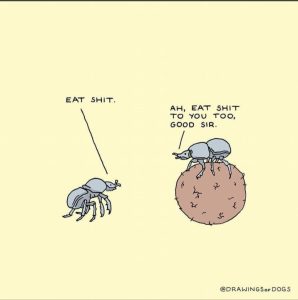
Dung Flies
These are often handsome yellow flies. Downside is they hang around dung.
They lay their eggs in dung, but the larvae (aka maggots) of most species don’t actually eat the dung, but rather the maggots of other flies that are living in the dung. Sort of like a lethal game of maggot tag in a pile of shit. Sound like fun? Here’s a crappy picture I took of a dung fly on a fresh cow patty.
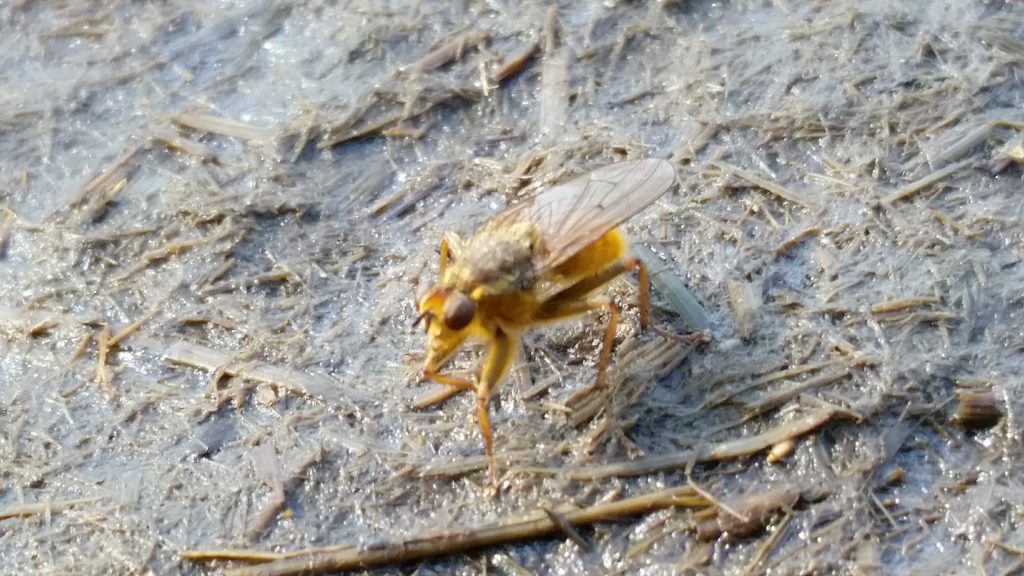
Dung Moss
Some kinds of moss are very choosy about where they live, and some choose only very specific types of dung. Some specialize on herbivore dung. Others on carnivore dung. Sometimes they even prefer the dung of one species over that of another.
Now, growing only on certain types of dung is kinda cool, but want to know the really cool part? The cool part is how they ‘find’ the dung they want to grow on.
As just discussed, flies like dung, so who better to carry moss ‘seeds’ (technically spores) to fresh piles of dung than flies! That’s right – flies unwittingly carry moss spores from dung pile to dung pile. But wait, you say. Sure, flies are attracted to fresh dung, but why would flies visit the ‘old’ dung where the moss is growing in order to pick up spores to carry?
The moss has already thought of that and come up with the solution: beautiful umbrellas. That’s right. Turns out flies really like the fancy little umbrellas where the moss stores its spores.
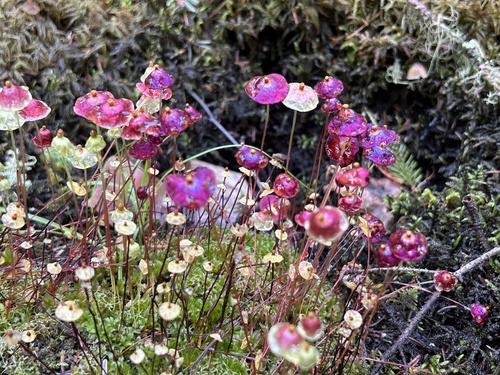
Just A Little Taste?
Lots of bees and butterflies eat poop as well. Plenty of nutrients in there, especially nitrogen which can be hard to find otherwise.
Here’s some beautiful metallic sweat bees enjoying some carnivore poop:
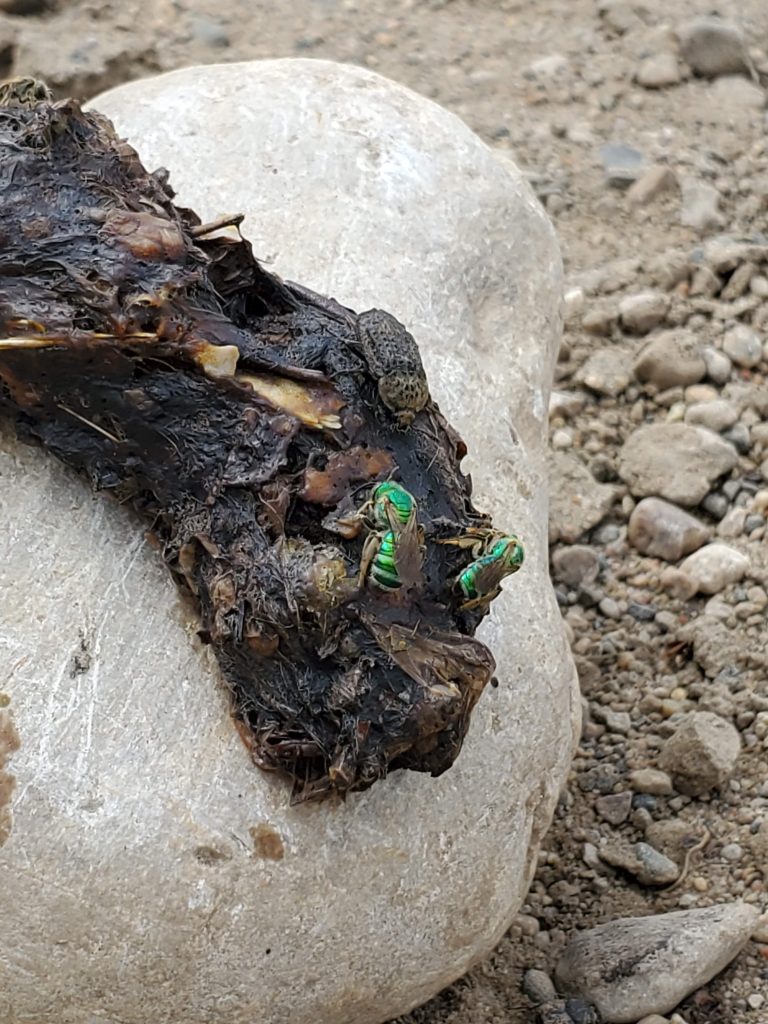
The Highest Form of Flattery?
If eating poop isn’t your thing, then maybe looking like it is. There’s a number of moths that look like bird droppings. After all, what better way to avoid predation by birds then to look like their droppings?
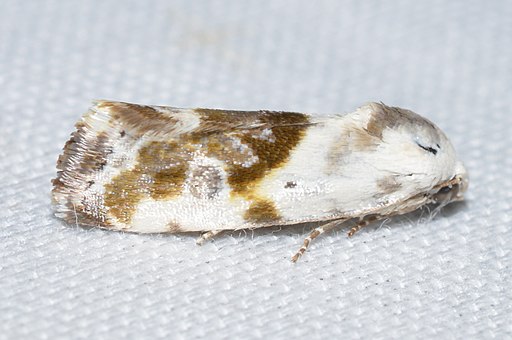
Thanks for dropping in for this close-up look at the ecology of poop!
~
Leave a Reply